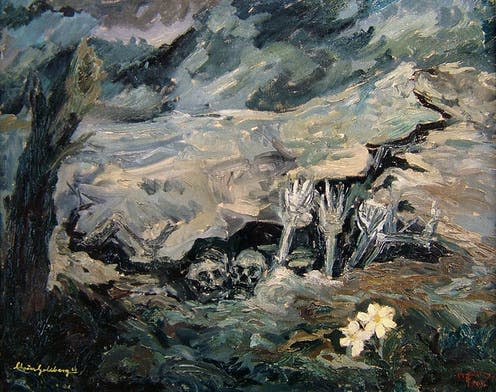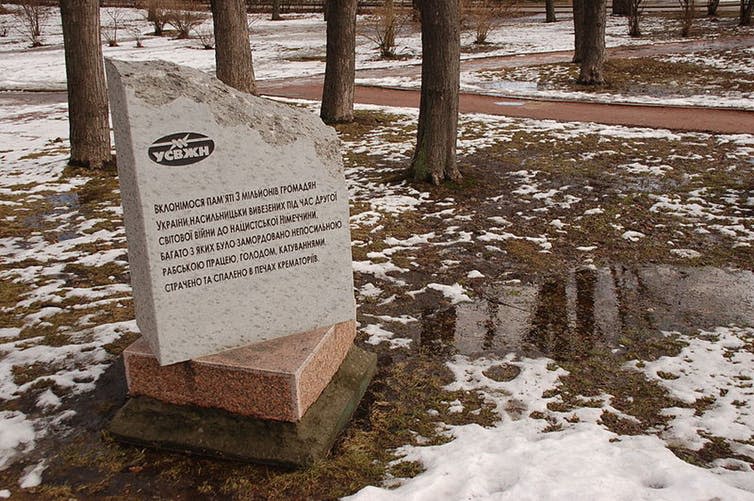DM Thomas's The White Hotel and why some novels are 'unfilmable'

There have been several attempts over the years to make a movie out of DM Thomas’s critically acclaimed 1981 novel, The White Hotel. But despite the involvement of such giants of the screen as David Lynch, Bernardo Bertolucci, Terrence Malik and David Cronenberg – who made a name for himself as a director who can adapt so-called “unfilmable books” – the novel has this far proved resistant to film adaptation.
In the absence of a film version, the book was recently adapted for radio by the BBC, directed by Jon Amiel and based on a screenplay written by the late Dennis Potter in the 1980s.
DM Thomas himself wrote in 2004 about the tortuous and sometimes tortured battle over screen rights for his novel, but apart from the saga over rights – so familiar to any novelist whose work has pricked the attention of film-makers – what was it about the book itself that meant a radio adaptation succeeded when film adaptations have failed?
There are a number of media, cultural and economic conventions that can explain this. But, in general, books that have been called “unfilmable” are books that are hard to read: weighty, ponderous, abstract, complex, convoluted, labyrinthine, densely allusive and excessively long. Or books that treat terrifying, horrifying, revolting or repulsive subjects.
The White Hotel is a difficult read – for a start there’s the unreliable, psychologically disturbed, potentially hallucinating narrator, whose obscene and surreal narratives are followed by representations of horrific historical events and natural disasters. The book’s sections shift jarringly across textual forms and styles – rational, psychoanalytic case notes melt into mythological explorations of psychological symbols. Stories of strange mental states jolt into collective, realist histories. It’s a challenging read.
By contrast, mainstream film conventions require a clear narrative structure and a degree of temporo-spatial logic and continuity. They tend not to favour excessively “talky” screenplays, preferring to tell their stories through visuals and structure them via editing.
These and other reasons that books have been considered unfilmable have been widely discussed. They include historical sprawl (Gabriel Garciá Marquez’s One Hundred Years of Solitude), multiple worlds (Stephen King’s Dark Tower series), too many characters (David Foster Wallace’s Infinite Jest), and multiple unreliable narrators who confuse the story (Mark Z. Danielewski’s House of Leaves).
Some novels are written with a stream of consciousness that keeps the story inside a character’s head (James Joyce’s Ulysses and Thomas Bernhard’s Woodcutters); there may be lack of clear plot and dynamic action (Virginia Woolf’s To the Lighthouse), fantasies too elusive for film’s special effects (H.P. Lovecraft’s At the Mountains of Madness), or a book may be too distressing or obscene to visualise realistically (Art Spiegelman’s Maus and The White Hotel).
Satisfying the censors
Censorship has also limited the number and scope of books that are allowed to be filmed – as films are more tightly controlled and censored than books. The reasons for this tighter control of visual images have ancient roots in Judaic, Islamic and Protestant Christian religions which represent the word as divine and the visual image as profane.

Their legacy persists in secular censorship practices. The US Motion Picture Production Code (MPCC) of 1930 ruled that: “The latitude given to film material cannot … be as wide as the latitude given to book material,” because “a book reaches the mind through words merely; a film reaches the eyes and ears through the reproduction of actual events”. It concluded that:
The mobility, popularity, accessibility, emotional appeal, vividness, straightforward presentation of fact in the films makes for intimate contact on a larger audience and greater emotional appeal. Hence the larger moral responsibilities of the motion pictures.
The MPCC advocated censoring films more stringently than books because film “reaches every class of society”, while other arts have their “grades for different classes”.
Even following the relaxation of the MPPC and similar censorship laws in other nations in the late 20th century, these considerations persist. When James Joyce’s Ulysses (1922) was made into a film by Joseph Strick in 1967, it remained banned in Ireland until 2000, whereas the book was never officially banned in Ireland.
Million dollar question
When David Cronenberg filmed William S. Burroughs’s so-called unfilmable Naked Lunch (1959) in 1991, and was criticised for not being faithful to the book, he retorted that a “straightforward adaptation”, featuring all of the book’s far-flung locations and representing its most shocking scatological and sexual passages would “cost US$100m and be banned in every country in the world”. So the book could be filmed, but it could not be financed or pass film censorship laws.
Financing and censorship are interconnected: films have to reach a much larger audience than novels or radio plays to turn a profit, and must therefore appeal to the mainstream. BBC Radio 4 has a much smaller audience and can appeal to other demographics on other radio channels.
For all of these reasons, a word-only adaptation for the niche audience of BBC Radio 4, aired on a Saturday afternoon – a time when listener numbers are close to being the lowest of the week – clearly offered an economically viable and socially acceptable venue for transmitting this brilliant and challenging novel in another media form. For this, at least, we must be grateful.
This article is republished from The Conversation under a Creative Commons license. Read the original article.

Kamilla Elliott does not work for, consult, own shares in or receive funding from any company or organisation that would benefit from this article, and has disclosed no relevant affiliations beyond their academic appointment.

 Yahoo News
Yahoo News 